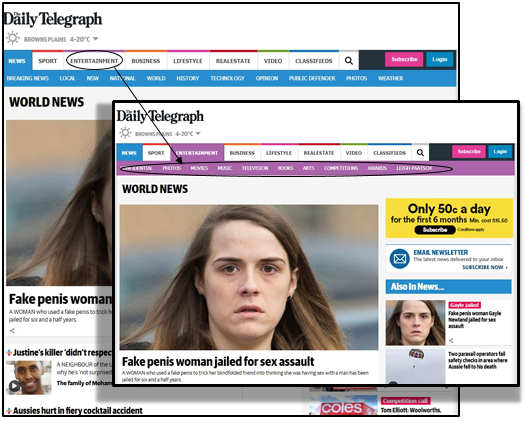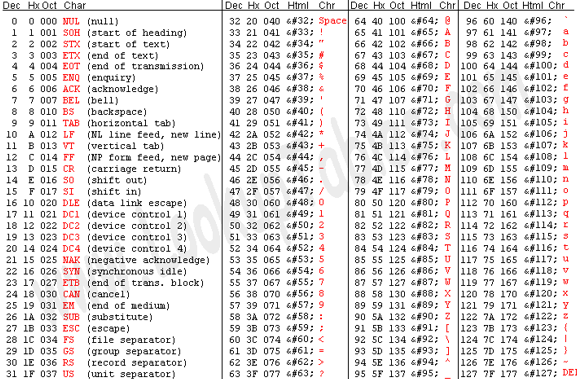- Use the pearl growing method for information seeking to search for information about “Electronic Record and Documents Management” and “Digital Asset Management”. Using a minimum of 500 words:
- Describe what you found/learnt about “Electronic Record and Documents Management” and “Digital Asset Management”. (Remember to provide references to authoritative sources)
Electronic Record and Documents Management
Electronic Record and Documents Management (ERDM) is a digital content management system that assists in the storage, disposal and usage of information. ERDMS provide a central repository to retrieve and access documents as opposed to having a disorganised system whereby documents are lost in multiple drives. This system is suitable in supporting the increasing technological demands of the 21st century. This automated software supports a multitude of file formats such as pdf, doc, xls etc. ERDMS consist of a multitude of capabilities, such as, but not limited to, accessing and using documents, creating and collaboration of documents, security of files, storage and also termination of files if necessary. ERDMS empower multiple users to be able to access content simultaneously. Two functionalities of ERDMS, document management and records management are highlighted below.
Documents Management
Document management refers to the access and use of digital documentation. The capabilities supported by the documents management include maintaining authenticity and standardizing workflow to ensure documents follow a particular standard. The documents management functionalities can be combined with the records management.
Records Management
Records managements refers to the protection of information. This provides a basis for managing records for evidential purposes, assisting in meeting business needs, ensuring the user conforms to the legislative and governance requirements and assisting in reducing the response time for information requests made by the user. Apart from the obvious, the security of information can be for a plethora of reasons, from legal requirements to providing authenticity of a business. The capabilities in records management supports a business to function efficiently in compliance to regulations and accountability.
Ultimately, the benefits associated with EDRMS include increased accountability traces, reduced business risks and optimised business processes.
Digital Asset Management
Digital Asset Management (DAM), enables an enterprise to manage, organise and distribute digital files from a central location. This centralized repository supports digital assets including images, videos, music and presentations, enabling those with authorization to access and view the digital assets. Digital asset management, supports a diverse array of software solutions, from ones’ digital file library to solutions relating to an enterprises content management. When an asset is stored in its digital format, it is detailed by its associated metadata. The metadata describes the assets content, ownership and authorization of the files information. The DAM software also supports cloud capabilities whereby users are able to access, store and share digital material from anywhere on any smart device.
Digital assets are developed through business needs and activities. They can be valuable in terms of expertise and time. However, as the pool of digital assets inevitably increases, managing the volume of assets also becomes increasingly difficult to maintain. DAM consists of the following functions which help control these assets; creating, cataloguing, storing and retrieving. DAM aims to achieve best practices and standards in an enterprises workflow to improve the availability of resources. As highlighted above, DAM adopts metadata for file naming and security conventions. Along with security protection, assets can easily be located. DAM is a cost effective solution which improves an organisations file management system, tracking and security of digital material, workflow and metadata management.
References:
- http://www.naa.gov.au/information-management/managing-information-and-records/systems/EDRMS/index.aspx
- http://www.naa.gov.au/Images/EDRMS-key-considerations_tcm16-88772.pdf
- https://webdam.com/what-is-digital-asset-management/
- http://digital-asset-management.extensis.com/what-is-digital-asset-management
b. Describe your experience with using the pearl growing method and the processes you undertook.
My experience in using the Pearl Growing method was quite successful and straightforward. I was easily able to search and locate information regarding the two search topics. I simply Googled “what is Electronic Record and Document Management?” and “what is Digital Asset Management?” and was able to find an extensive list of sources relating to it. The only difficult part about the search was sifting for the reputable sources from the list.
I Google searched Electronic Record and Document Management and Digital Asset Management in aims to find credible knowledge of the topics. I found an article published by the Australian Government relating to Electronic Record and Data Management. Considering the article was published by the Australian Government this carried a great deal of weight making the website seem extremely credible. This website also offered a PDF which I followed up on. The PDF provided a greater analysis of the content and was very profound with its information.
In terms of searching for information for Digital Asset Management, it was more difficult finding knowledge on this content. Most websites were advertising DAM products. I found a website by the name of Webdam. Webdam seemed quite credible, however I searched further for another website to corroborate my knowledge. In my endeavours to find a reputable website, I came across a website called “Extensis.” At first this website did not seem genuine, however after sifting through the material it seemed to match the aforementioned source. The content provided by both websites corroborated each other, indicating that the information from the sources were considerably credible.
The Pearl Growing Method was considerably effective. However in saying this, I found that I have been subconsciously using this method of research during my years of academic research. I was just unfamiliar that this was a method of research, let alone having a title. I have frequently explored the internet in hopes to learn and obtain some knowledge of unfamiliar topics. I would start with base searches such as defining the content, and then branch out through related results. In the events of answering these questions, I was not required to investigate as profoundly as anticipated. Knowledge was quiet easy to locate.
2. Arrange the following list in alphabetical order, then answer the questions below. You should look to the literature and existing theory to justify your answers.
- #!%&: Creating Comic Books
- $35 a Day Through Europe
- .38 Special
- 1001 Arabian Nights
- Albany, New York
- El Paso, Texas
- H20: The Beauty of Water
- New York, New York
- Newark, New Jersey
- Plzen, Czech Republic
- Saint Nicholas, Belgium
- St. Louis, Missouri
- The 1-2-3 of Magic
- The Hague, Netherlands
- The Lord of the Rings
- XVIIme siècle

a) Did you put ‘The Hague’ under T or H? Why?
The Hague is listed under “T,” as the word “The,” is a pronoun. “The Hague,” refers to a place in the Netherlands, whilst “Hague,” has no relevance to Netherlands. Therefore this forms an intrinsic part of a geographical location. Thus the word “The,” serves importance and deserves to be listed under “T.”
b) Did you put ‘El Paso’ under E or P? Why?
El Paso is listed under “E.” El Paso is is the name of a city in Texas, and “El,” is the first part of the name of the city. Again, “El,” contributes intrinsically as part of a geographical place. “Paso,” itself is not the name of a city, thus why the “El,” in front has greater significance.
c) Which came first in your list, ‘Newark’ or ‘New York’? Why?
It can be discerned above that “New York,” precedes “Newark,” as the spacing between New and York, has greater significance. This can be corroborated by the ASCII table above which conveys that special characters (space) have priority over lowercase characters. Thus, the spacing after “New,” takes precedence over the letters “ark,” in “Newark.”
d) Does ‘St. Louis’ come before or after ‘Saint Nicholas’? Why?
As conveyed in the list above, “Saint Nicholas,” precedes “St. Louis,” as “a,” takes priority over “t.” Alphabetically, “a,” comes before “t,” and thus why “Saint Nicholas,” took precedence over “St. Louis.” “St,” is just an abbreviation of the word “Saint.” Abbreviations are alphabetised as they are written, however in this scenario, the abbreviation is the latter.
e) How did you handle numbers, punctuation, and special characters? (Justify your answer?
The ASCII table was referred to when arranging the provided list in alphabetical order. The ASCII table specifies that special characters (space, numerators, parenthesis etc) precedes numbers and punctuation. This is then followed by letters (uppercase first then lowercase). By adhering to the ASCII conventions the above list was arranged. This method was used as ASCII is the most common format for text files in computers today.
Furthermore, in reference to “XVIIme siècle,” it is articulated by Wellisch that roman numerals should be arranged according to their arithmetical values among other Arabic numerals. “XVII,” translates to 17, an thus becomes the last literature in the listing.
f) Assuming the italicized terms are book titles, what might be a more useful way to organise this list? (Justify your answer)
Assuming the italicized terms are book titles, it would be effective to sort the books alphabetically as per normal. As articulated above, special characters should be given priority over numbers, punctuation and letters.
In the cases where the word “The,” precedes the rest of the title, the following word after “The,” should take prominence. For example, “The Lord of the Rings,” should be organised under “L,” indicative of “Lord of the Rings.” By listing books in this manner, it makes the process to navigate and locate a title much easier. A vast array of books begin with “The,” which makes it a tedious and redundant process to sift through all the titles, titled “The,” to locate a book.
g) If the cities represent places you’ve visited and the book titles are ones you’ve read, how could chronology be used to order the list in a more meaningful way? (Justify your answer)
Chronology refers to the arrangement of dates in order of occurrence. Chronology would thus be extremely effective in listing the book titles read or places visited in terms of dates. This would sort the places visited and books read by the date in which they first occurred. This gives meaning to the list, as the list would be ordered in a manner that reflected what was visited/read chronologically (least recent to most recent). Chronologically ordering the places and books by dates visited would also make it easier to navigate, as the date would be referred to in order to locate items.
In saying this, arranging the two diverse categories together, it may bode problematic. Thus, in order to get the maximum value and ensure the list is ordered in the most meaningful way possible, it would make sense to order the two categories separately. Organising the categories separately, and in chronological order will preserve a more meaningful essence as opposed to a mix set of data. An example of how this would be listed is detailed below;
- #!%&: Creating Comic Books
- $35 a Day Through Europe
- .38 Special
- 1001 Arabian Nights
- H20: The Beauty of Water
- The 1-2-3 of Magic
- The Lord of the Rings
- XVIIme siècle
- Albany, New York
- El Paso, Texas
- New York, New York
- Newark, New Jersey
- Plzen, Czech Republic
- Saint Nicholas, Belgium
- St. Louis, Missouri
- The Hague, Netherlands
3. Seek out and provide screen shots of web sites that are examples for each of the following organisation schemes:
a) Topic/Subject
 The Daily Telegraph is a perfect example of a website that employs the topic/subject organisational scheme. It can be discerned from the navigational bar that news are categorised by topics (sport, entertainment, business, lifestyle, real-estate etc.) As illustrated, under each topic, there is sub-content or subjects pertaining to the subject matter. This is evident in the foregrounded image which has highlighted these subjects in relation to the topics.
The Daily Telegraph is a perfect example of a website that employs the topic/subject organisational scheme. It can be discerned from the navigational bar that news are categorised by topics (sport, entertainment, business, lifestyle, real-estate etc.) As illustrated, under each topic, there is sub-content or subjects pertaining to the subject matter. This is evident in the foregrounded image which has highlighted these subjects in relation to the topics.
b) Task
 The Webjet website adheres to the task organisational scheme as it includes a variety of tasks for the user to select from. Flight bookings, hotel bookings, package deals, car hire and cruises are some user options offered by this site.
The Webjet website adheres to the task organisational scheme as it includes a variety of tasks for the user to select from. Flight bookings, hotel bookings, package deals, car hire and cruises are some user options offered by this site.
c) Audience
 The Centrelink website is great example of demonstrating the audience organisational scheme. The circled section in the vertical navbar displays the range of audiences the Centrelink website caters to.
The Centrelink website is great example of demonstrating the audience organisational scheme. The circled section in the vertical navbar displays the range of audiences the Centrelink website caters to.
d) Metaphor
 The Dropbox website is a creative and expressive at fulfilling the metaphor organisational scheme. This is because it depicts a “box,” that has documents being “dropped,” in it. This graphic metaphor conveys the connotation that documentation can be dropped in a central repository for storage and use. This graphic representation reinforces the name of the service provided by this cloud website. It achieves the purpose of giving the user an idea of what the website is about at first glance.
The Dropbox website is a creative and expressive at fulfilling the metaphor organisational scheme. This is because it depicts a “box,” that has documents being “dropped,” in it. This graphic metaphor conveys the connotation that documentation can be dropped in a central repository for storage and use. This graphic representation reinforces the name of the service provided by this cloud website. It achieves the purpose of giving the user an idea of what the website is about at first glance.
e) Hybrid
 The Griffith University homepage is an appropriate example of a hybrid organisational scheme. This hybrid website combines features of the Topic, Audience and Task organisational schemes to create an effective and dynamic website. These features can be construed from the navigational bar which reflects the aforementioned features.
The Griffith University homepage is an appropriate example of a hybrid organisational scheme. This hybrid website combines features of the Topic, Audience and Task organisational schemes to create an effective and dynamic website. These features can be construed from the navigational bar which reflects the aforementioned features.


Leave a comment